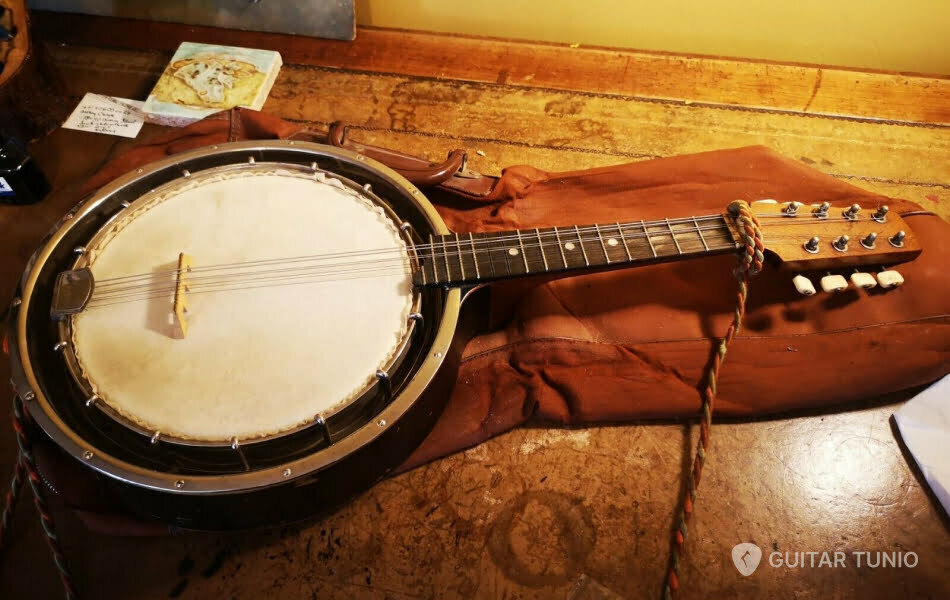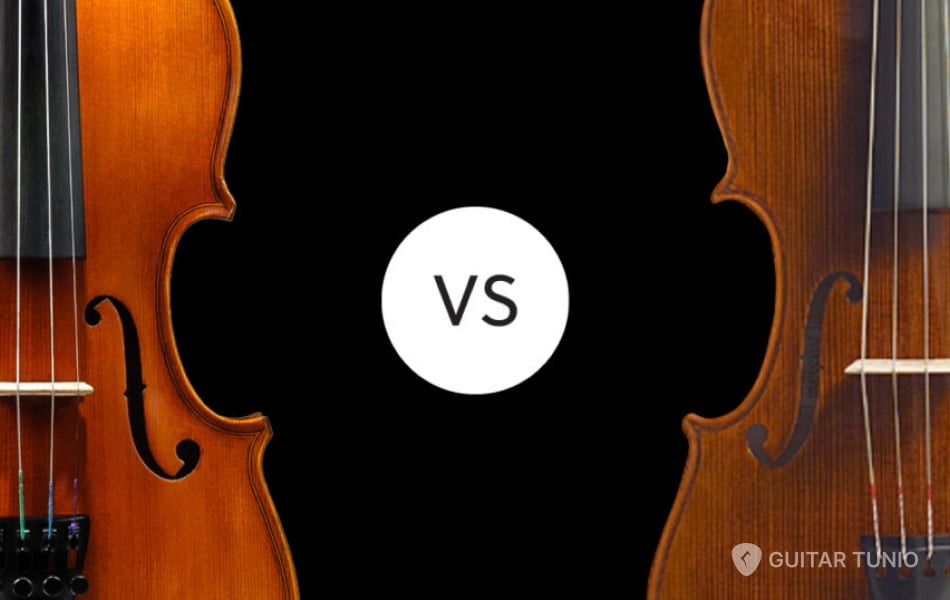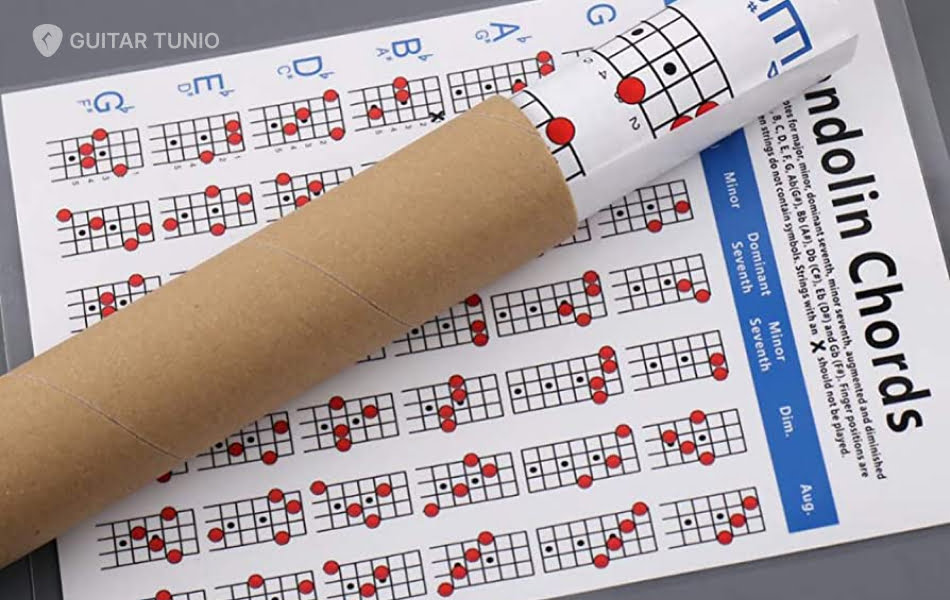5 Common Guitar Scales for Beginners
Learning guitar scales is an essential part of playing guitar. They provide the foundation for playing melodies and improvising solos. In this article, we will discuss five of the most common guitar scales that every guitarist should know.
What is guitar scale
If you're a guitar player, you may have heard the term "scales" before, but you might not know what they are exactly. Guitar scales are sequences of notes played in ascending or descending order that help you build your finger strength and dexterity. Practicing scales also helps you become more familiar with the notes on your fretboard, improves your musical ear, and gives you a foundation for creating melodies for your original songs.
5 common guitar scales
Below is a list of five crucial scales for beginners, complete with guitar scale fretboard diagrams, to help you get started.
C major scale (Open position)

Learning the C major scale is an excellent way to comprehend the key of C, and because it doesn't contain any sharps or flats, it's a great starting point for musical composition. To play it entirely on the B string, you need to follow the formula of whole step / whole step / half step / whole step / whole step / whole step / half step. By using this method, you can even play "Twinkle Twinkle Little Star"!
However, the C major scale is more commonly played in open position across multiple strings to fret the notes.
Notes on the C major scale
The C major scale is easy to remember since it doesn't contain any sharps or flats, as mentioned earlier. Starting from a low C note, there are seven notes in the C major scale, or eight if you count the final note, which is the same as the 1st note (or root). When you play the "C" note for a second time on this scale, immediately after the 7th note, you'll notice that it sounds an octave higher than the 1st note of the scale.
- C - D - E - F - G - A - B - C
G major scale (Open position)
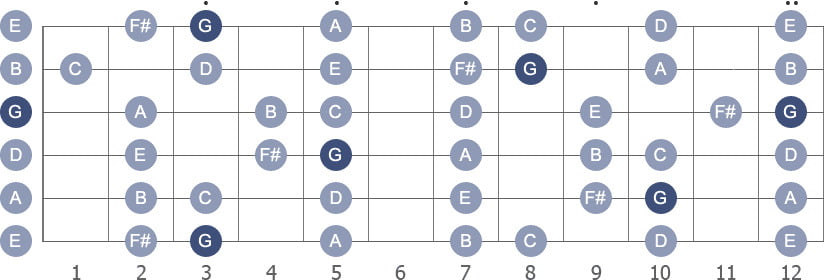
Similar to the C major scale, you can play the G major scale on a single string by following the formula of two whole steps / half step / three whole steps / half step. However, it is more common to use all six strings to play all the notes properly and develop strength in your pinkie finger.
Notes on the G major scale
Major scales have all the notes in the key, unlike pentatonic scales that only have five notes (hence the "pent" in the name). Therefore, if you play a G major scale, you'll play all seven notes that make up the key of G. Unlike the key of C, which doesn't have sharps or flats, the key of G has one sharp note that you should be aware of. The G major scale spans seven notes between a low G and a high G.
- G - A - B - C - D - E - F# - G
E minor pentatonic sale
What are pentatonic scales
A pentatonic scale is a popular five-note scale that is widely used for riffs, solos, and melodies in rock and blues music. You've probably heard a pentatonic scale before without realizing it! This abbreviated scale is made up of notes based on its corresponding eight-note scale and contains only five notes instead of eight, making it easier for beginners to learn.
There are specific formulas to create different pentatonic scales.
For example, to build a major pentatonic scale, you would play the 1st, 2nd, 3rd, 5th, and 6th notes of a scale. A major pentatonic scale has a bright, upbeat sound, similar to standard octave-based major scales.
Similarly, to create a minor pentatonic scale, you would play the 1st, flattened 3rd (b3), 4th, 5th, and flattened 7th (b7) notes of a scale. A minor pentatonic scale has a darker, more somber tone, much like standard eight-note minor scales. Formulating these scales is an excellent way for new guitarists to apply their knowledge of the notes that make up each scale and how they sound when played together.
E minor scale
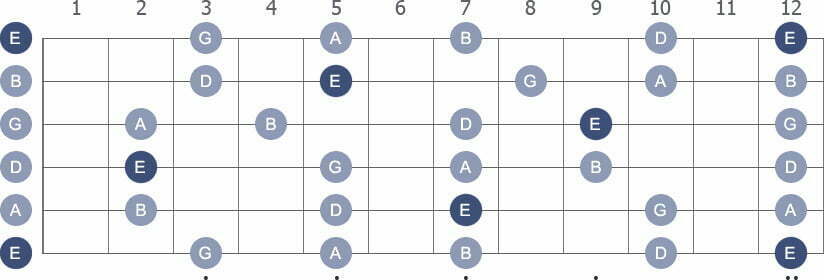
The E minor pentatonic scale in the open position is the perfect starting point for soloing. Many popular songs, including "How Many More Times" by Led Zeppelin, "Back in Black" by AC/DC, and "Rumble" by Link Wray, feature this scale.
Unlike major or minor scales that have eight notes (octave), the pentatonic scale only has five notes. This abbreviated scale follows a specific pattern, taking five notes from the corresponding octave-based scale and removing three of those eight notes (more on this later in this article).
The E minor pentatonic scale is easy for beginners to learn because it only consists of five notes. Moreover, these notes can be played across open strings and the second and third frets of your guitar in the open position. Your fingers don't have to move between too many different frets or stretch too far. For this reason, the E minor pentatonic scale is also popular among experienced guitarists for creating dynamic yet lightning-fast solos.
Note in the E minor pentatonic scale
The E minor pentatonic scale spans five notes between a low E and high E note, which are:
- E - G - A - B - D - E
A minor pentatonic scale (5th position)
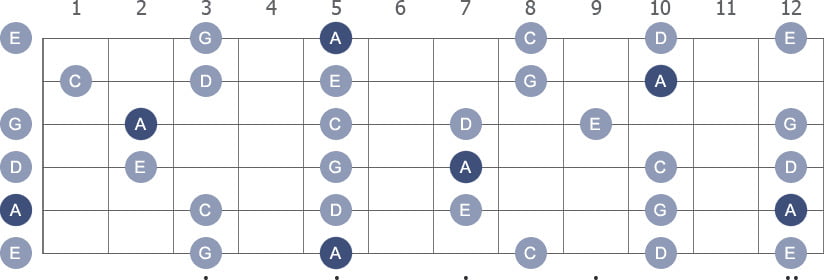
Learning the A minor pentatonic scale across two octaves in the fifth position is easy and can help improve your fret-hand strength. When we refer to "octaves" in pentatonic scales, we mean a set of five notes chosen from the established formula of a standard eight-note scale.
This version of the A minor pentatonic scale spans two octaves, with each sequence of five notes starting with "A." The next sequence of five notes also starts with "A," but one octave higher. You can identify the same starting point note played at a higher pitch, which can help beginner guitarists develop their musical ear and ability to recognize notes played at different octaves.
"Stairway to Heaven" by Led Zeppelin and "Hoodoo Bluesman" by Junior Wells are some popular songs that use the A minor pentatonic scale. Learn to play the A minor pentatonic scale today!
Notes on the A minor pentatonic scale
The A minor pentatonic scale, like the E minor pentatonic scale, consists of five notes between a low A note and a high A note.
- A - C - D - E - G - A
E harmonic minor scale (open position)
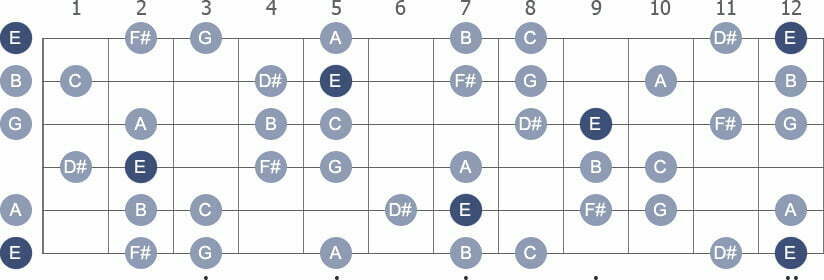
The E harmonic minor scale is frequently used in classical, jazz, and metal music because it can add flavor to your solos. One way to familiarize yourself with the E harmonic minor scale is to play it entirely on the High E string, starting from the open position to the second fret (whole step), second to third fret (half step), third to fifth fret (whole step), fifth to seventh fret (whole step), seventh to eighth fret (half step), eighth to 11th fret (minor third), and 11th to the 12th fret (half step).
However, it's more practical to play the E harmonic minor scale on all six strings. Learn how to play the E harmonic minor scale in an open position across two octaves.
Notes on the E harmonic minor scale
The E harmonic minor scale has the same set of notes as the G major scale, but you start and end on a different note. If you already know how to play the G major scale on the guitar, learning the E harmonic minor scale will be effortless.
The E harmonic minor scale comprises seven notes between a low E and high E note.
- E - F# - G - A - B - C - D - E
Other common guitar scales for beginners
In addition to the five scales we have already discussed, there are several other crucial guitar scales that are frequently used and are beneficial for beginners to learn.
The blues scale
The blues scale is a pentatonic scale with an added note that gives it its distinctive blues sound. It employs both the major and minor pentatonic scale formulas, but includes a flattened 5th (b5) known as "the blue note."
You can use any root note as a starting point to play the blues scale in various ways. Because it includes both the flattened 5th and the standard 5th notes, the blues scale has its own distinct character. It can be heard in classic blues and rock-influenced blues songs like Aerosmith's "Walk This Way" and British rock band Cream's "Sunshine of Your Love."
The natural minor scale, also known as the Aeolian mode, is the most common minor scale. Although there are three different types of minor scales (natural, harmonic, and melodic), the terms "minor scale" and "natural minor scale" are frequently used interchangeably. When someone specifically plays a "harmonic minor scale" or a "melodic minor scale," there are subtle differences.
The term "mode" in music comes from the Latin word for "method" and refers to a type of scale. All scales can be referred to as "modes," including the Aeolian mode, as well as the Dorian and Mixolydian modes (which we will discuss later).
The major scale
The standard form of the major scale consists of eight notes, starting with the 1st (or root) note and ending with the same note, one octave higher. It follows this formula:
- 1st (or root) note
- 2nd note is one whole step higher than the 1st note
- 3rd note is one whole step higher than the 2nd note
- 4th note is one half step higher than the 3rd note
- 5th note is one whole step higher than the 4th
- 6th note is one whole step higher than the 5th
- 7th note is one whole step higher than the 6th
- 8th note is one half step higher than the 7th and will take you back to the root note
To play a major scale in any key, you can use this formula with any root note. Major scales can be heard in almost every genre and countless songs. Its bright and lively sound makes it suitable for danceable pop songs, rock stadium anthems, and more.
The Dorian mode
The Dorian mode, also known as the "Doric mode," is similar to the minor scale and consists of eight notes. Its sound is often characterized as melancholy, thoughtful, and even somewhat gloomy. This scale is frequently used in blues and rock music in combination with minor 7th chords. Examples of popular songs that utilize the Dorian mode include Michael Jackson's "Billie Jean" and Deep Purple's "Smoke on the Water." To play a scale in Dorian mode, you would use the following formula.
- 1st (or root) note
- 2nd note
- Flattened 3rd (b3)
- 4th note
- 5th note
- 6th note
- Flattened 7th note (b7)
The mixolydian mode
Despite its challenging name, the Mixolydian mode is a scale that is commonly used in jazz and blues, and is surprisingly easy for beginning guitarists to learn. This scale is utilized to create solos over dominant chords, and once mastered, it can enable you to improvise like a seasoned professional. Miles Davis, a renowned jazz trumpeter (though not a guitarist himself), famously used the Mixolydian scale in his song "All Blues." To play a scale in the Mixolydian mode, you would use the following formula.
- 1st (or root) note
- 2nd note
- 3rd note
- 4th note
- 5th note
- 6th note
- Flattened 7th note (b7)
The Mixolydian mode is often associated with jazz and blues music, but it can also be found in various songs across different genres. Examples of songs that use the Mixolydian mode include "White Wedding" by Billy Idol, "Royals" by Lorde, and "Uptight (Everything's Alright)" by Stevie Wonder.

